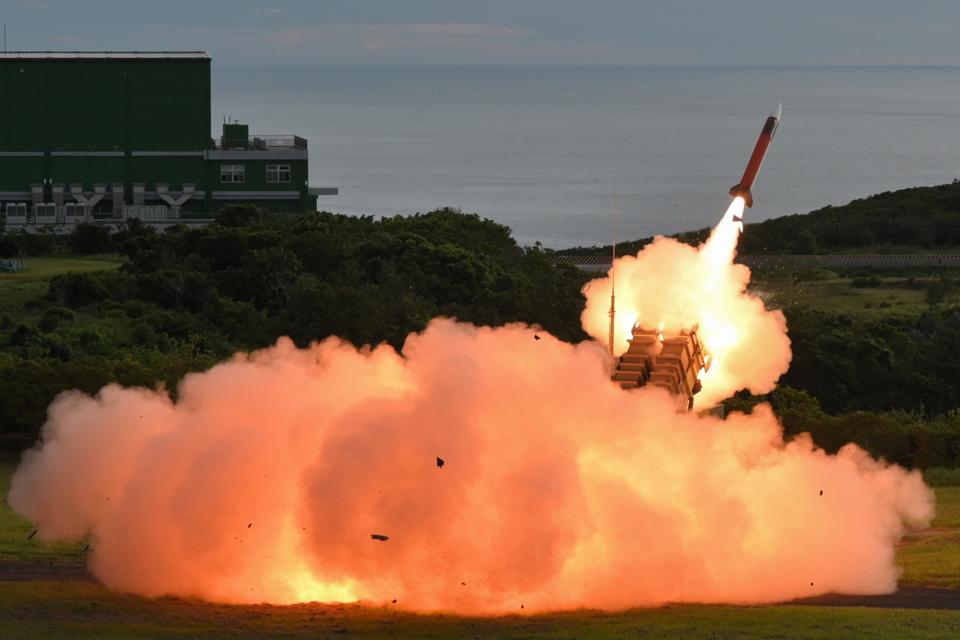The U.S. defense industry is emerging as one of the most resilient sectors for investors. Amid global instability and rising geopolitical tensions, American policymakers are displaying a unique commitment to military strength. The recent passage of President Trump’s “One Big Beautiful Bill”, a sweeping piece of legislation that pushes U.S. defense spending to historic highs, and a newly agreed upon EU – U.S. trade deal underscores this trend. The bill adds $150 billion in new funding to the Department of Defense, bringing total projected spending for the 2026 fiscal year to over $1 trillion. On top of that, the EU has committed to over $600 billion of military equipment procurement in the coming years. The signal to markets is undeniable: defense is a national and global priority.
For investors, this presents an opportunity. Massive new capital is now earmarked for shipbuilding, advanced munitions, next-generation aircraft, and a new missile defense system dubbed the “Golden Dome.” Defense stocks, long considered cyclical or defensive, may now be positioned for long-term structural growth. Interestingly, this surge in spending comes even as U.S. military expenditures, as a share of GDP, sit at multi-decade lows. According to the Stockholm International Peace Research Institute (SIPRI), global defense spending has climbed 37% over the past decade, but America’s share of that growth has not kept pace with its expanding economy. In short: U.S. defense spending is climbing fast in absolute terms, but relative to our economic size, there’s still plenty of runway ahead.
TOPSHOT – An US-made MIM-104 Patriot surface-to-air missile is launched during a live fire exercise at the Chiupeng missile base in Pingtung county on August 20, 2024. (Photo by Sam Yeh / AFP) (Photo by SAM YEH/AFP via Getty Images)
AFP via Getty Images
Geopolitical Tensions: Fuel for the Defense Industry
Ongoing wars in Europe and the Middle East and intensifying tensions in the Indo-Pacific have forced governments across the globe to rethink their defense postures. In Europe, Russia’s continued aggression in Ukraine has led to a dramatic increase in defense budgets across NATO member states. The 2% GDP target for defense spending has given way to a 5%+ target for European members, meaning our allies are finally putting their money where their mouth is – although those expenditures are far from guaranteed. For context, in 2024, the U.S. spent roughly $3,000 per citizen on national defense, more than four times what most European nations spent, according to an article from Barron’s. In Europe that number needs to rise meaningfully if they’re going to hit their NATO commitments.
The Middle East is increasingly unstable. U.S. involvement in ongoing conflicts in the region, including efforts to deter Iran’s nuclear program and manage the persistent tensions between Israel and Palestine, continues to highlight the need for advanced missile defense systems, precision munitions, and rapid deployment capabilities.
The conflict also highlights the expenses associated with war. Every rocket fired comes with a price tag and restocking munitions is expensive, especially when a conflict is hot and countries can’t afford to wait for supplies.
The conflict in the Middle East is also indirectly expensive in that it introduces significant volatility into global oil markets. Iran, as a key OPEC member, controls the northern side of the Strait of Hormuz, through which roughly 20% of the world’s petroleum supply passes. Any disruption here carries both economic and strategic consequences – further justifying elevated defense spending.
Meanwhile, tensions in the Indo-Pacific region continue to build. China’s assertiveness around Taiwan and the South China Sea places it in direct competition with U.S. naval and diplomatic interests. The need to prepare for a potential conflict in the region has subtly been called to the forefront via Trump’s recent focus on shipbuilding and other maritime industries. U.S. naval power is extremely important if we were to see a real conflict develop here, but we need more ships. The U.S. market share in shipbuilding has plummeted to just 0.13% as of 2023, down from 5% in the 1970s, according to the U.S. Naval Institute. In contrast, China, Japan, and South Korea now account for over 90% of global shipbuilding capacity. As a result, the U.S. is more reliant on allies and commercial partnerships than ever before – a vulnerability that further underscores the need for investment.
Defense Spending and Foreign Sales: A Boon for Contractors
The international dimension of rising defense spending adds a powerful tailwind for U.S. contractors. In 2024, the U.S. Department of State reported that global arms transfers for the U.S. reached nearly $118 billion, and $97 billion of that was funded directly by U.S. allies and partners. American dominance in foreign military sales is accelerating, not just because of technological superiority, but because of interoperability. As Europe, the Middle East, and Asia expand their defense budgets, they are prioritizing systems that integrate seamlessly with U.S. platforms. Whether it’s the F-35 fighter jet or the Patriot missile system, American defense tech is becoming the global standard.
This shift has economic implications as well. Defense remains one of the few areas where the U.S. still plays a leading role in high-value manufacturing, a strategic lever in our otherwise service-dominated economy. Arms exports give the U.S. a trade advantage, especially as reducing the trade deficit remains a priority for the Trump administration. The recently finalized EU-U.S. trade deal, which lowered blanket tariffs from 30% to 15%, also includes a pledge of $600 billion in EU military procurement. While the real flow of capital will depend on each country’s budget realities, demographics, and political might, the rhetoric alone has been enough to push European defense stocks lower. The market is betting the major U.S. defense contractors, commonly referred to as the primes, will ultimately be the benefactors.
Between 2020 and 2024, the U.S. accounted for 43% of all global arms exports, according to the Stockholm International Peace Research Institute. Key buyers include Saudi Arabia, Japan, Australia, and EU nations – many of which are now aiming for defense spending levels of 3–5% of GDP. For major U.S. firms like Lockheed Martin (LMT), Northrop Grumman (NOC), and RTX Corp. (RTX), this means multibillion-dollar order backlogs and increased income diversification. It also acts as a hedge against domestic budget volatility, reinforcing the fact that U.S. contractors don’t need to rely solely on Washington to grow.
OGDEN, UT – MARCH 15: A F-35 fighter jet take-offs for a training mission at Hill Air Force Base on March 15, 2017 in Ogden, Utah. Hill is the first Air Force base to get combat ready F-35’s. They currently have 17 that might be deployed in the fight against terrorism and ISIS in the near future. (Photo by George Frey/Getty Images)
Getty Images
The Autonomous Future of Defense
A growing portion of new defense dollars is being directed not just at traditional weaponry, but at artificial intelligence, autonomy, and next-generation battlefield technology. While tanks and missiles still matter, it’s AI, drones, and predictive analytics that will define the next phase of military dominance. Companies like Anduril Industries are at the forefront of this transformation. Their autonomous drone systems, battlefield command software, and AI surveillance tools are redefining how militaries perform in combat environments. The basis for all current and future R&D is that the U.S. military needs technology that is mass-producible and entirely replaceable. Unmanned and easily replaceable aircraft are a no-brainer for potential future conflicts.
Meanwhile, Palantir Technologies (PLTR) continues to expand its work with the Department of Defense, building decision-intelligence platforms that help military leaders simulate outcomes and deploy resources more efficiently. These capabilities aren’t theoretical -they’re already being used in logistics, counterterrorism, and battlefield planning across several branches of the U.S. military. The software-first approach is here to stay.
Defensive Cybersecurity
Beyond the battlefield, the digital domain is just as critical. Companies like Palo Alto Networks (PANW), Fortinet (FTNT), and CrowdStrike (CRWD) are playing crucial roles behind the scenes, working alongside defense contractors to secure U.S. military networks and infrastructure. Their platforms are already being used to detect foreign intrusions, prevent ransomware attacks, and build cyber resilience across key defense systems. As cyberattacks from nation-state actors continue to escalate, the Pentagon is steadily shifting a greater portion of its IT and cybersecurity budget toward these firms, viewing them as essential partners in modern warfare. Tanks, aircraft, and ships are worthless if you can’t secure the digital infrastructure required for operations.
This photograph hsow the logo of the US big data analytics software company Palantir Technologies during the World Economic Forum (WEF) annual meeting in Davos, on January 23, 2025. (Photo by Fabrice COFFRINI / AFP) (Photo by FABRICE COFFRINI/AFP via Getty Images)
AFP via Getty Images
And then there’s SpaceX. Its Starlink satellite network has become essential for battlefield communications, notably in Ukraine, and its ability to launch defense communications into low-Earth orbit has made the company indispensable to Pentagon strategy. The militarization of space is no longer a sci-fi concept – it’s a live and growing budget category. Taken together, these companies represent a shift from defense as a manufacturing industry to one centered around software, autonomy, and connected systems. Investors looking to position themselves for the next decade of military innovation would be wise to watch not only the legacy names – but also the disruptors.
Parting Thoughts
Ultimately, investing in the defense sector isn’t just about capitalizing on geopolitical unrest – it’s about understanding the structural realignment of global priorities. Defense is a central pillar of economic, technological, and industrial strategy. New legislation in the U.S. and international military spending commitments signal a paradigm shift. Multiyear visibility into global defense spending is music to the ears of the legacy contractors. Rising players in autonomous systems, cybersecurity, and satellite communications are building out the next generation of military infrastructure. There’s lots to be excited about, and investors looking for durable tailwinds in a shifting global order should take a look across the entire defense spectrum.








